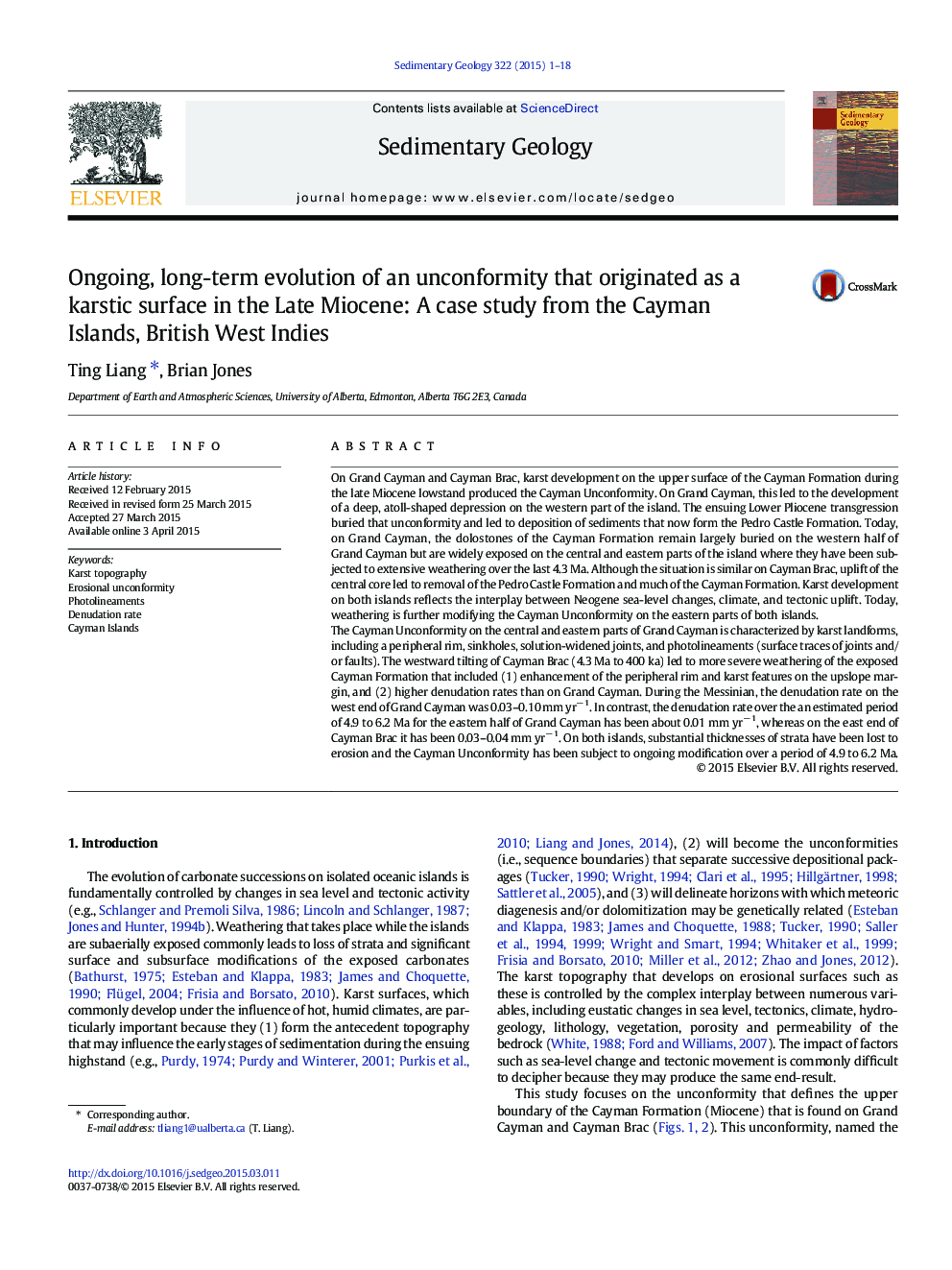| کد مقاله | کد نشریه | سال انتشار | مقاله انگلیسی | نسخه تمام متن |
|---|---|---|---|---|
| 4689258 | 1636041 | 2015 | 18 صفحه PDF | دانلود رایگان |
On Grand Cayman and Cayman Brac, karst development on the upper surface of the Cayman Formation during the late Miocene lowstand produced the Cayman Unconformity. On Grand Cayman, this led to the development of a deep, atoll-shaped depression on the western part of the island. The ensuing Lower Pliocene transgression buried that unconformity and led to deposition of sediments that now form the Pedro Castle Formation. Today, on Grand Cayman, the dolostones of the Cayman Formation remain largely buried on the western half of Grand Cayman but are widely exposed on the central and eastern parts of the island where they have been subjected to extensive weathering over the last 4.3 Ma. Although the situation is similar on Cayman Brac, uplift of the central core led to removal of the Pedro Castle Formation and much of the Cayman Formation. Karst development on both islands reflects the interplay between Neogene sea-level changes, climate, and tectonic uplift. Today, weathering is further modifying the Cayman Unconformity on the eastern parts of both islands.The Cayman Unconformity on the central and eastern parts of Grand Cayman is characterized by karst landforms, including a peripheral rim, sinkholes, solution-widened joints, and photolineaments (surface traces of joints and/or faults). The westward tilting of Cayman Brac (4.3 Ma to 400 ka) led to more severe weathering of the exposed Cayman Formation that included (1) enhancement of the peripheral rim and karst features on the upslope margin, and (2) higher denudation rates than on Grand Cayman. During the Messinian, the denudation rate on the west end of Grand Cayman was 0.03–0.10 mm yr− 1. In contrast, the denudation rate over the an estimated period of 4.9 to 6.2 Ma for the eastern half of Grand Cayman has been about 0.01 mm yr− 1, whereas on the east end of Cayman Brac it has been 0.03–0.04 mm yr− 1. On both islands, substantial thicknesses of strata have been lost to erosion and the Cayman Unconformity has been subject to ongoing modification over a period of 4.9 to 6.2 Ma.
Journal: Sedimentary Geology - Volume 322, 1 June 2015, Pages 1–18
